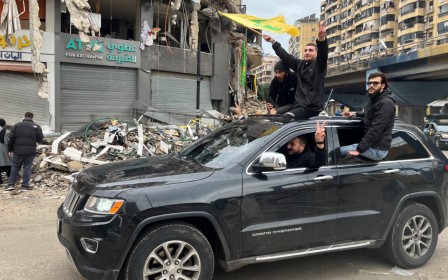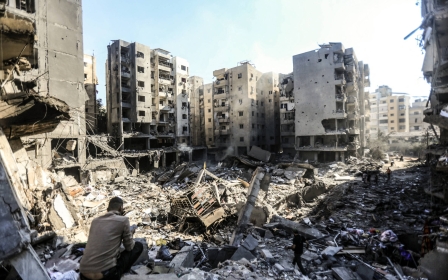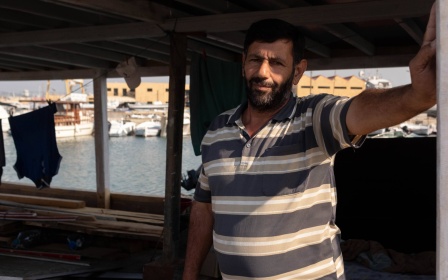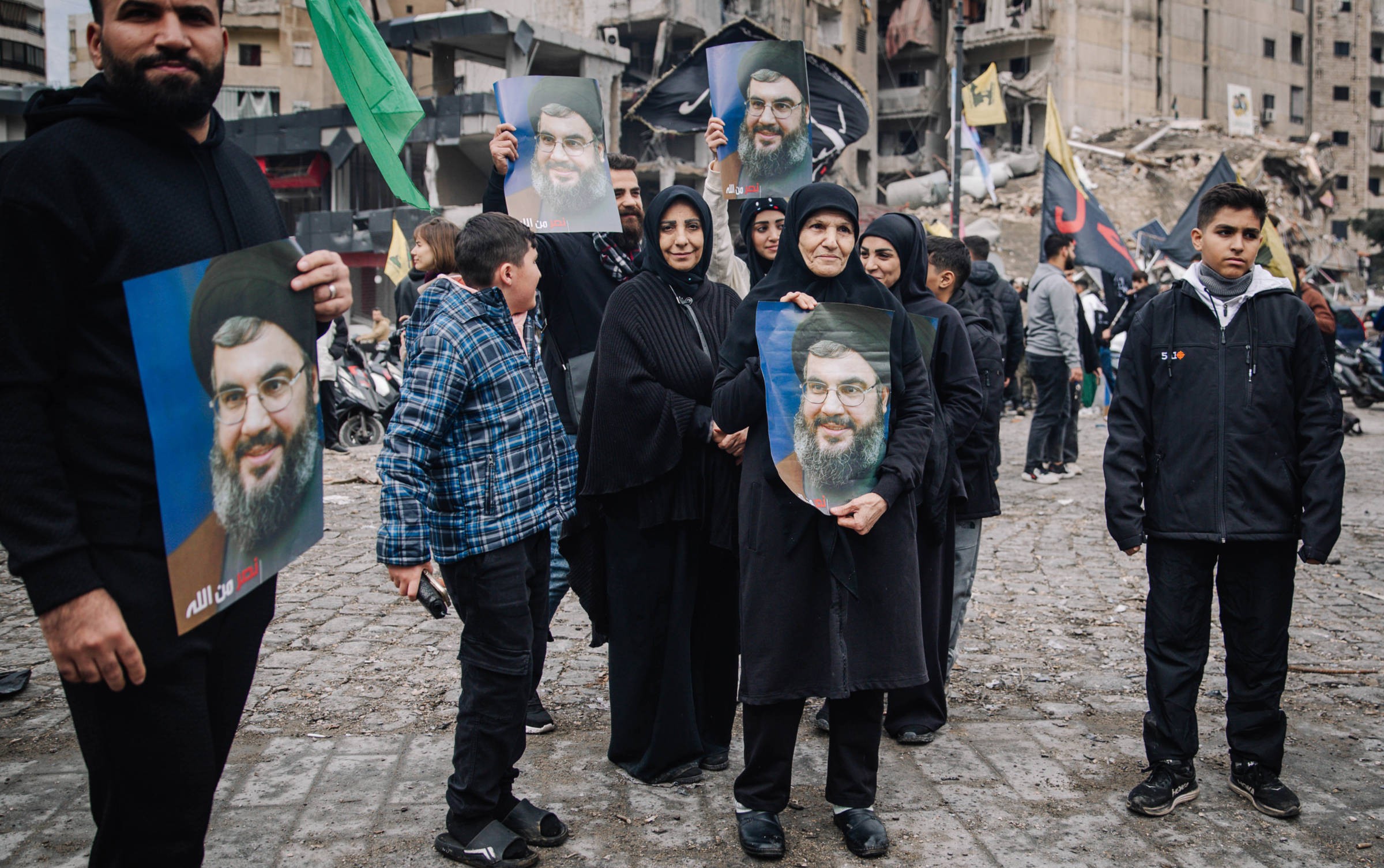
In pictures: The southern suburbs of Beirut come back to life
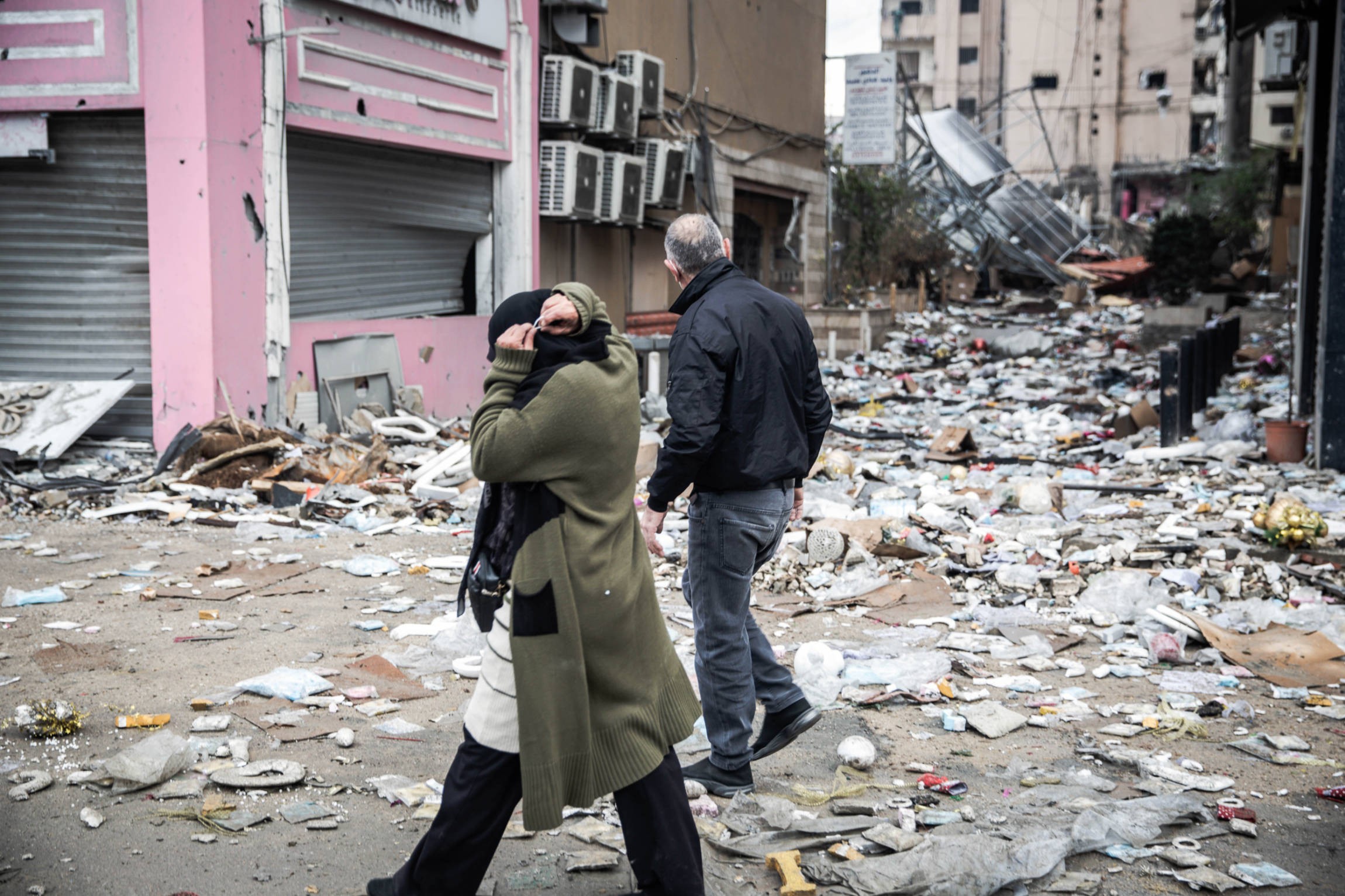
In the early hours of the morning, many residents who had been forced to leave their neighbourhoods returned to Dahieh, Beirut's southern suburbs. They discovered apocalyptic scenes. (All images by Laurent Perpigna Iban)
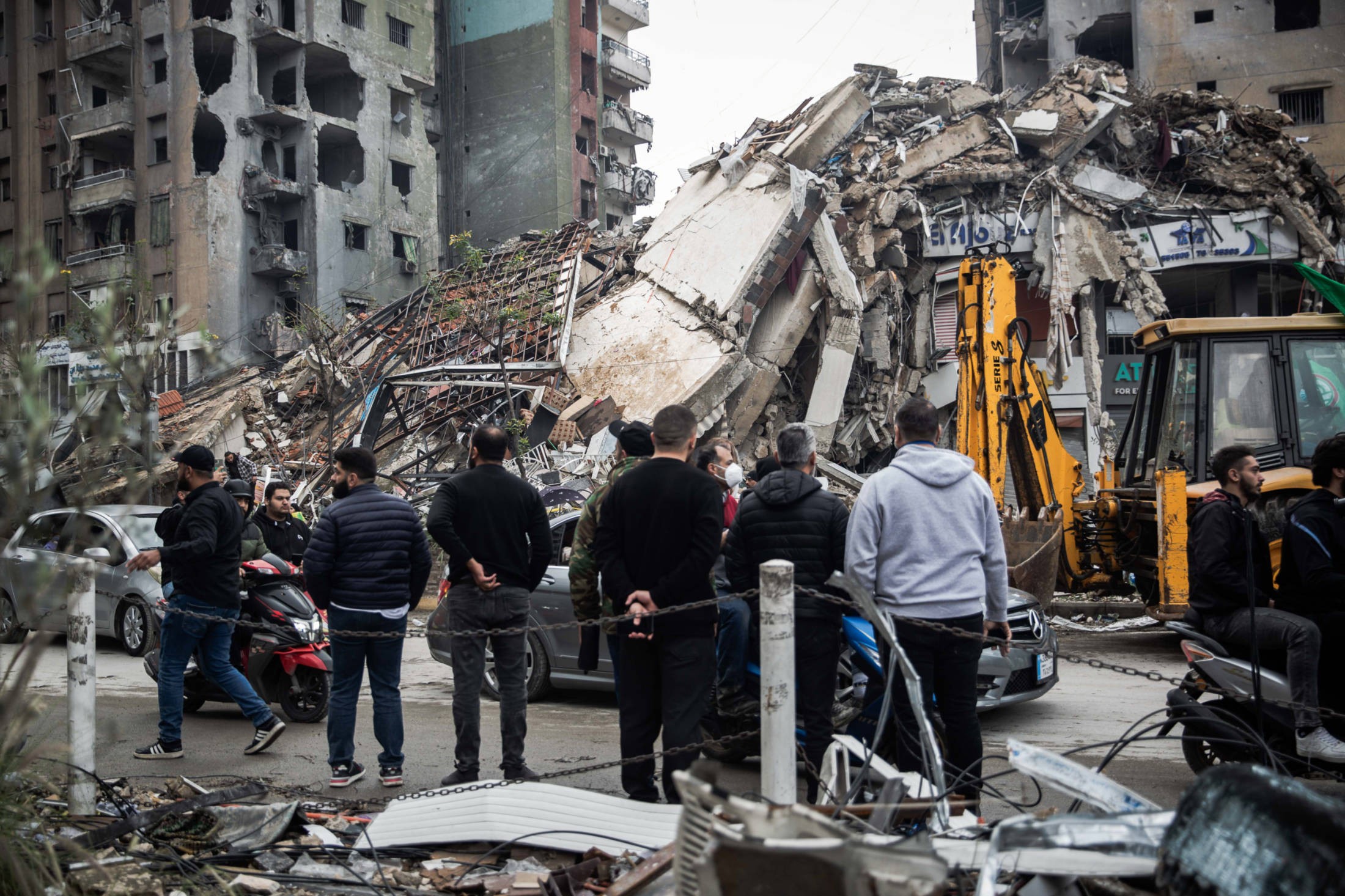
Residents walk through the streets of their neighbourhoods, inspecting the hundreds of gutted buildings left in ruins. A little further on, Hassan, in his thirties, explains: "My house is destroyed, but we are alive, and so is the resistance. We won the war. We will rebuild our neighborhoods just as we did after the 2006 war."
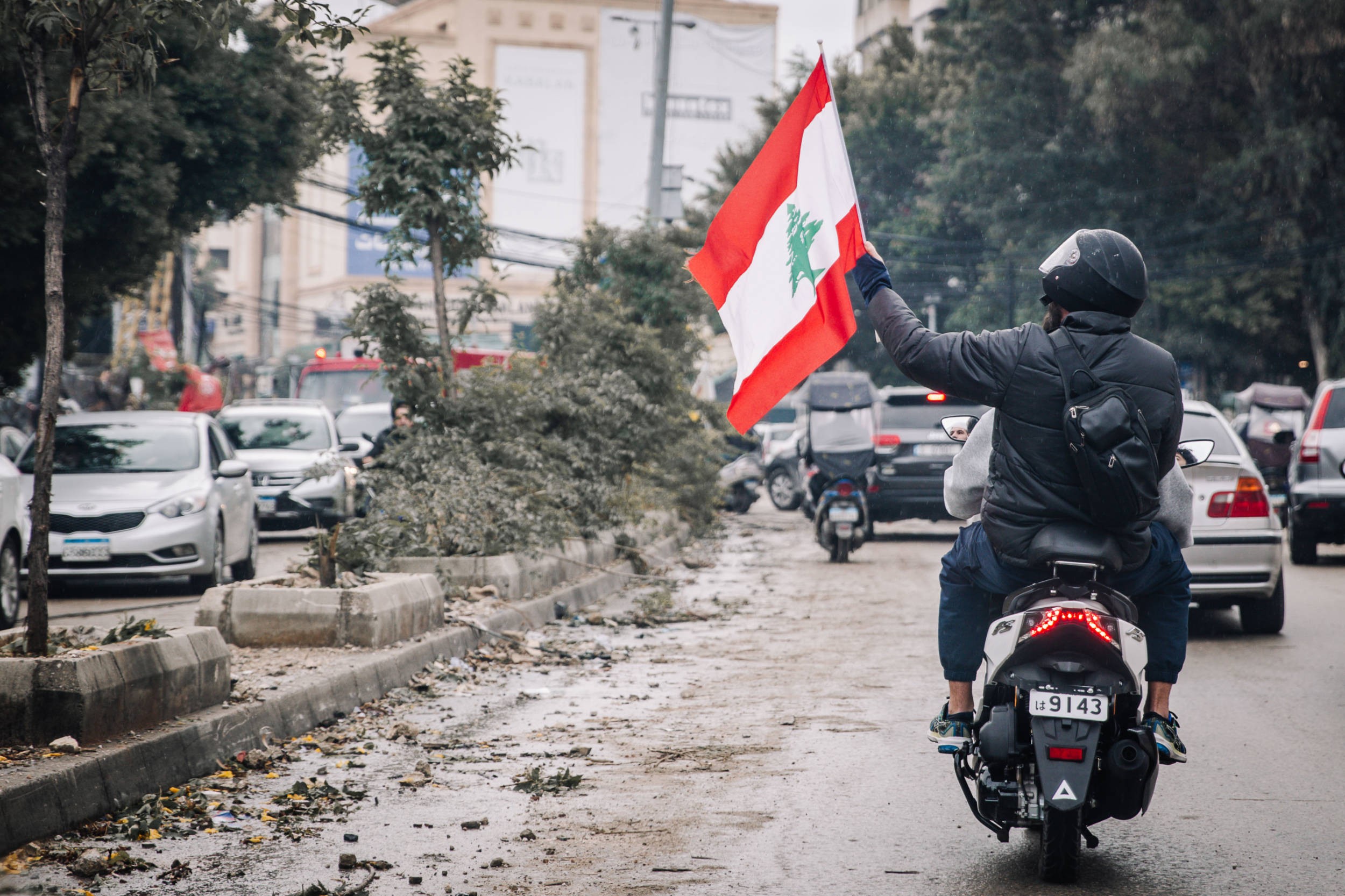
A man on his scooter waves a Lebanese flag as he drives through the Haret Hreik neighbourhood. There is a great sense of pride in the southern suburbs, and many residents feel that Hezbollah has emerged victorious despite the losses.
"The Israelis did not succeed in advancing on the ground in southern Lebanon. Hezbollah suffered huge losses, but it has been strengthened ideologically and morally: it did not target civilians and held its ground, not like Israelis," Ali, 21, said.
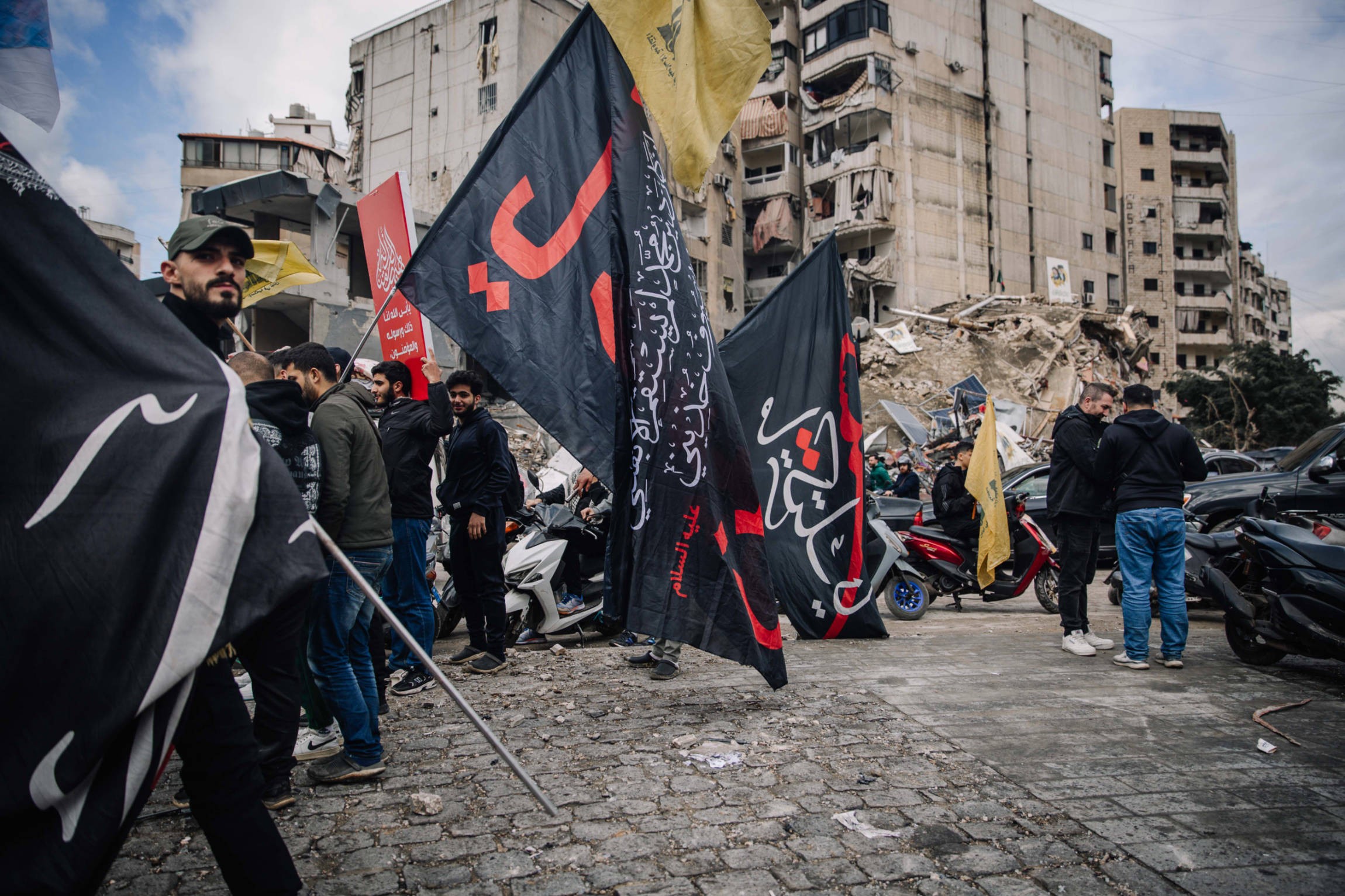
In the Zaafat neighbourhood, dozens of residents stand on a roundabout, carrying flags of Shia Imam Hussein.
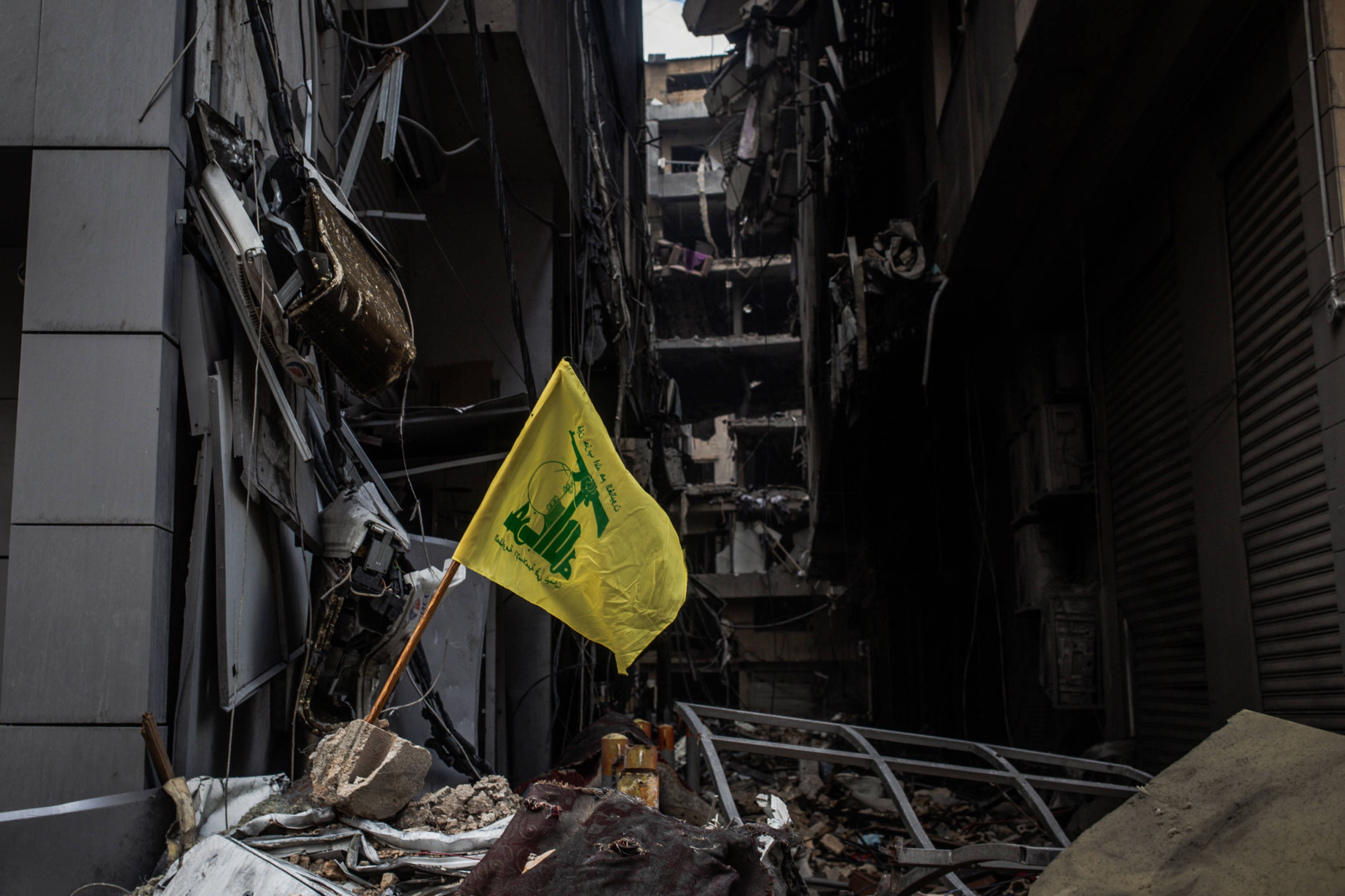
Haret Hreik was one of the most heavily bombed neighbourhoods. Residents planted a Hezbollah flag on the rubble.
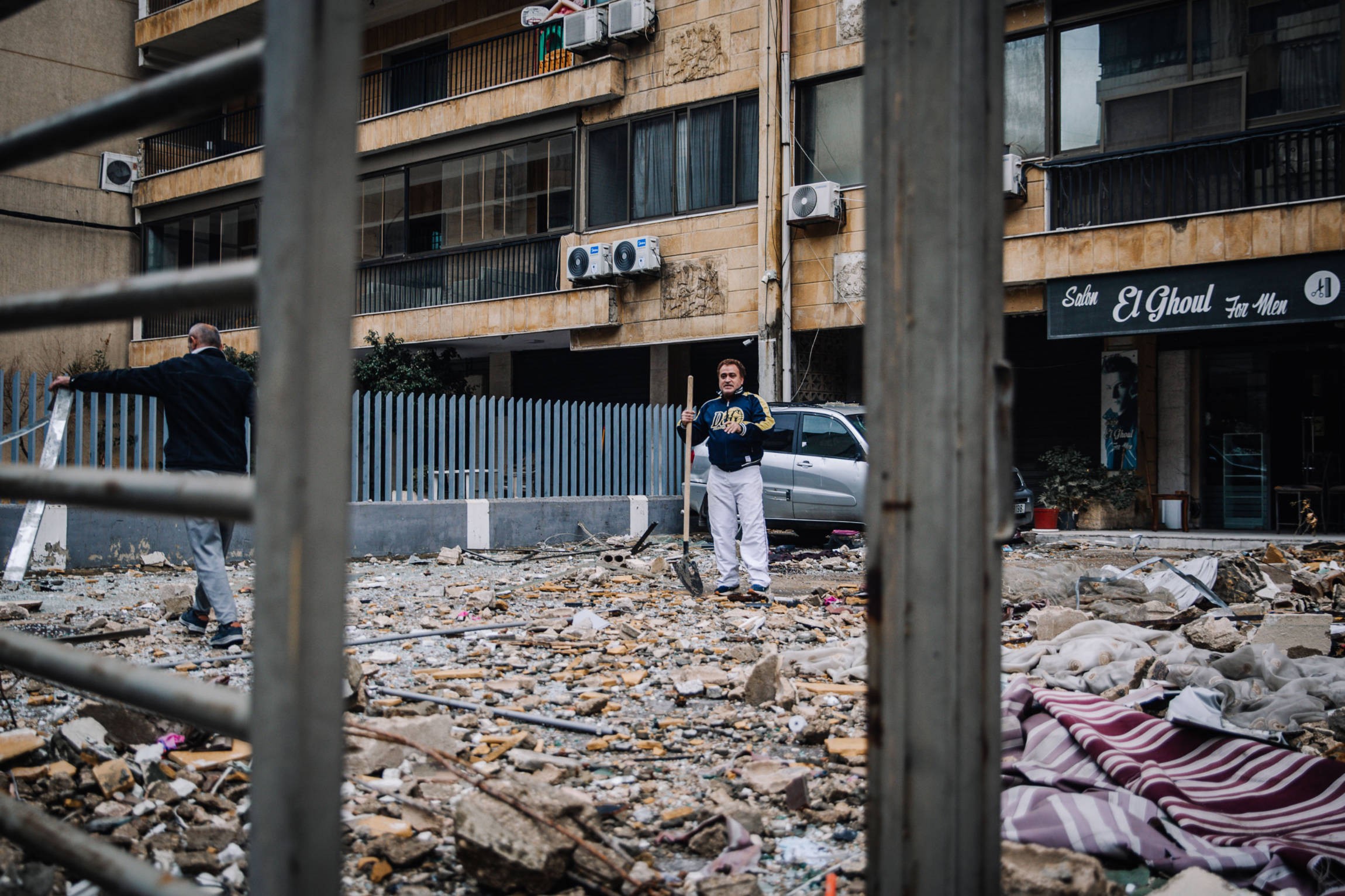
A resident who has just returned home clears the rubble in front of his building.

As the day went on, many cars of displaced residents returned to Dahiyeh. Many did not know if their homes were still standing.
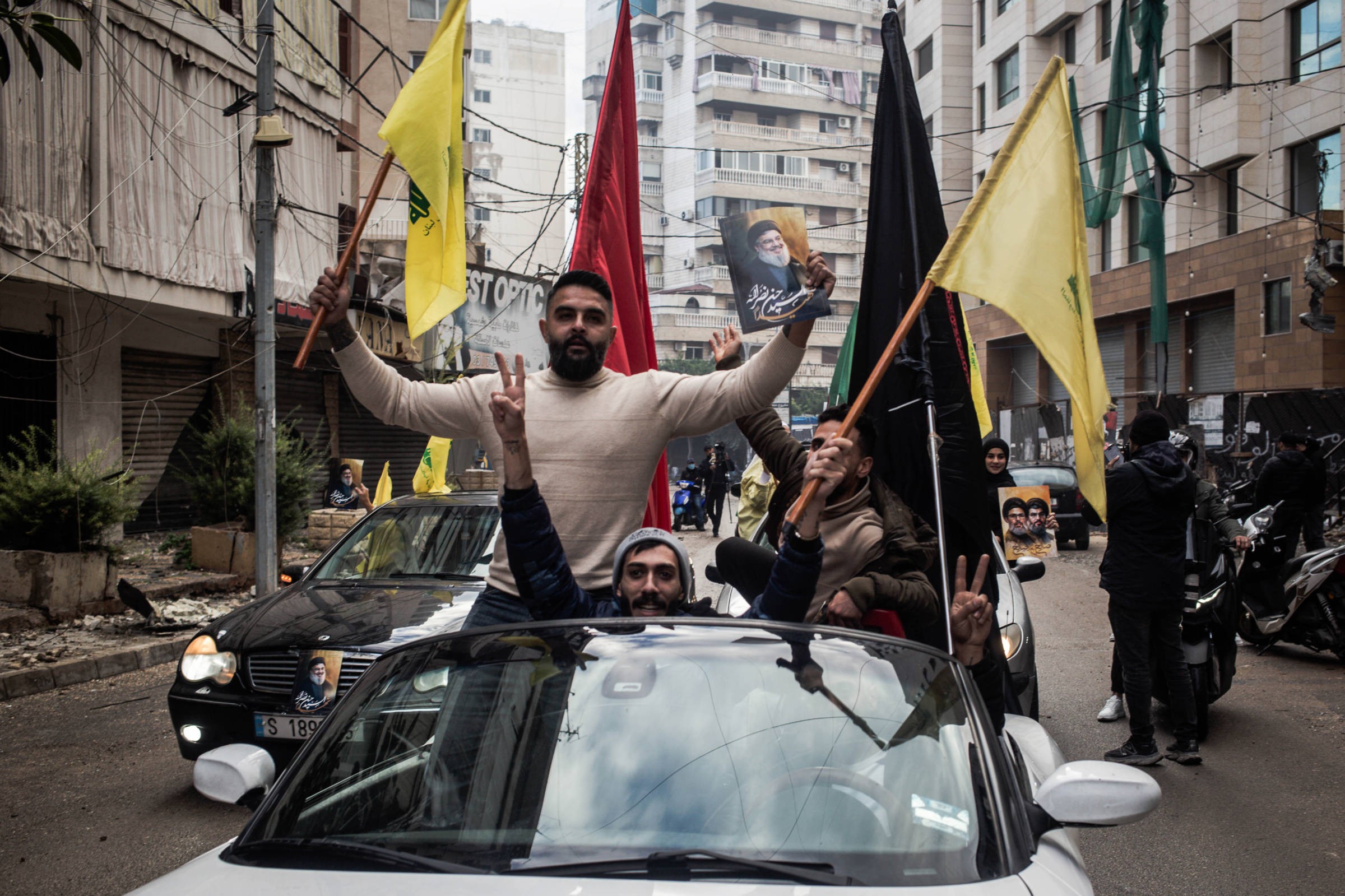
As bursts of automatic weapons echoed across Beirut, many Hezbollah supporters held up portraits of late leader Hassan Nasrallah, killed by a massive Israeli strike on Dahiyeh at the end of September.
"Nasrallah, we are at your service," they cried out.

Gunmen firing into the air in the Zaafat neighbourhood. The shots echoed across Beirut's southern suburbs throughout the day.

The traffic in Dahiyeh, typically heavy in peacetime, returned to normal.

Behind a ruined building, a portrait of Qassem Soleimani, the former commander of the Revolutionary Guards' Quds Force, killed in Baghdad by a US strike in January 2020, hangs alongside that of Fouad Shukr, a senior Hezbollah military commander killed in July.
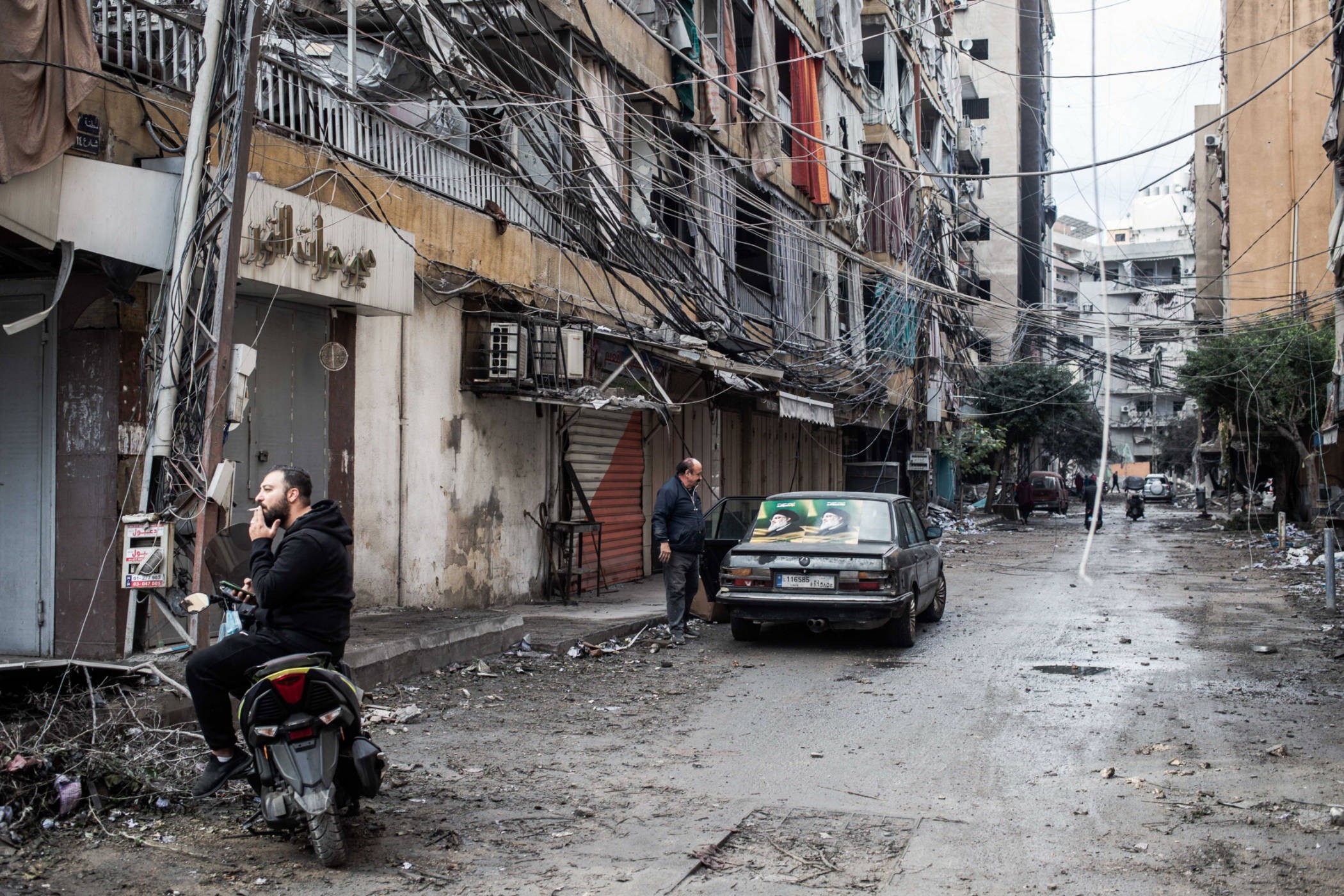
A man places portraits of Hassan Nasrallah on the rear window of his vehicle.
"He is no longer here, but we will continue his fight; he is immortal," a woman remarks a few meters away.

The extent of the damage in the southern suburbs leaves little room for doubt: it will take a great amount time and money to rebuild the hundreds of buildings and infrastructure destroyed in Israeli strikes.
The World Bank estimated that the war has cost Lebanon $5.1bn in economic losses, with damage to physical structures amounting to an addition $3.4bn.
Middle East Eye delivers independent and unrivalled coverage and analysis of the Middle East, North Africa and beyond. To learn more about republishing this content and the associated fees, please fill out this form. More about MEE can be found here.


